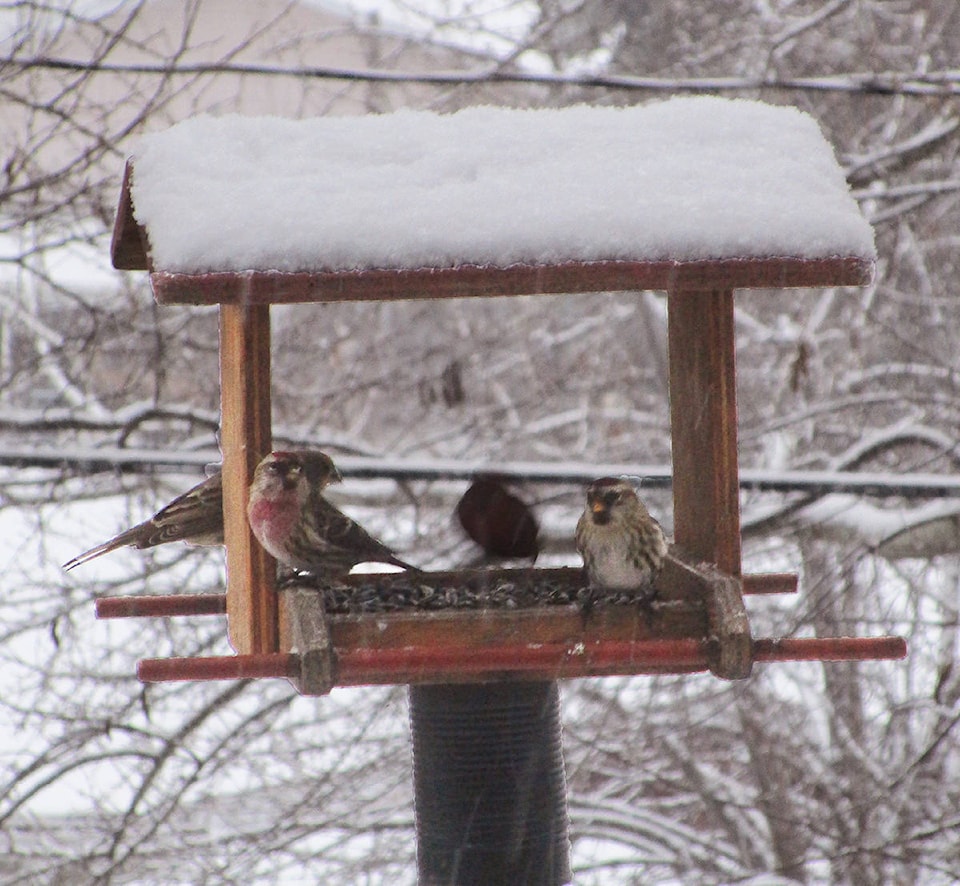Finches - common birds known as irruptive species - are often seen in the Trail and Rossland area during the cold months.
But not this winter.
This year’s Christmas Bird Count, held Dec. 16, had the lowest tally observed in the past 13 years, says Linda Szymkowiak, lead counter for the Warfield-Rossland circle extending from Paterson to the Strawberry Pass.
Twenty six species and a total of 529 birds were counted, compared to the usual 30-or-so species observed and 900-plus birds typically seen during the annual event.
“Several factors influence the numbers including weather, number of volunteer bird counters and number of areas covered,” Szymkowiak said.
“But the most important factor is the presence or absence of irruptive species such as Bohemian waxwings, evening grosbeaks and pine siskins.”
Irruptive species are northern latitude seed-eating birds that migrate southwards when there is a shortage in the coniferous cone crops over a large area.
“In some years the numbers can be dramatic,” Szymkowiak noted. “In our 2011 count there was a total of 610 Bohemian waxwings, 387 pine siskins and 125 evening grosbeak. In this year, there were only 40 evening grosbeak, 21 pine siskins and no Bohemian waxwings on count day.”
From Trail to Beaver Valley, numbers were down a bit as well.
Volunteer Shirley Coffin says 34 species were observed, compared to the average 36 species, and 1,302 total birds were tallied.
She says the count is dependent upon weather as well as how many people participate with their back yard feeders.
While there were no rare sightings, Coffin did mention one standout, that being the number of common redpolls. The common redpoll, a small finch, is an active forager that feeds on birch trees, or visits feeders, over the winter.
The CBC (Christmas Bird Count) is a census of birds in the Western Hemisphere, performed annually in the winter by volunteer birdwatchers. Administered by the National Audubon Society, the CBC is the longest-running Citizen Science survey in the world that provides population data for use in science, especially conservation biology.
The next “snapshot” of the distribution and abundance of birds is called the “GBBC” or Great Backyard Bird Count. Since 1998, the GBBC has been held worldwide in mid-February, and encourages bird watchers of all ages to count birds for at least 15 minutes a day from Feb. 16 to Feb. 19. Observations are submitted online and tallied by the Cornell Lab of Ornithology and National Audubon Society.
Bird watching and counting can be as easy as watching a feeder hung in your garden, Szymkowiak says.
“A bird identification book and a pair of binoculars are all that is needed,” she explained. “There are apps for your phone and many websites that can help with identification and increase your understanding of birds and their importance in our environment.”
The top ten birds, those most likely to be seen at a feeder or in the neighbourhood, include the black-capped chickadee, dark-eyed junco, red-breasted nuthatch, northern flicker, steller’s jay, house finch, song sparrow, American goldfinch, American crow in Warfield and common raven in Rossland.
The irruptives such as pine siskins, evening grosbeaks and common redpolls can crowd the feeders. Large flocks of Bohemian waxwings and pine grosbeaks can strip a mountain ash tree of its berries in a few hours.
